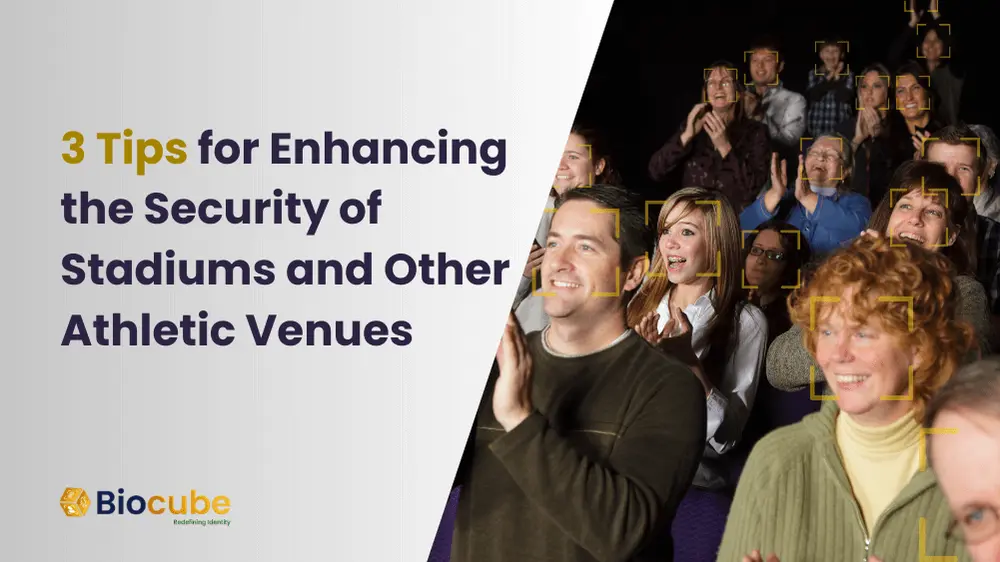
Baseball, basketball, skating, and other sports event have a long history attached to terrorism. The sports security industry is known to most people around the globe. The spectators at such competitions understand the need to take precautions by installing security cameras, hiring officers with a vast border security/anti-terrorism-related background, and a separate crowd monitoring team. According to multiple reports and articles, athletic venues across the globe incur an expense north of $2 billion annually. However, the Guardian states that the annual expense reached more than $6 billion after the security revamps was taken as a precaution at the Athens Olympics and Euro 2004.
Terrorists still find ways like backpack bombs, gadgets for spoofing cameras or other security machines, and other sophisticated tactics to harm the public, athletes, and other people at the event. Under such circumstances, it’s often too late to take action against the terrorist, as they manage to escape as part of the crowd. Traditional CCTV systems require manual monitoring and often have blind spots for a few seconds, giving a window of opportunity to attackers. Revamping the existing checking mechanisms with new-age technology can prove exceptionally beneficial.
3 Tips to Enhance Stadium and Other Athletic Venues Security
1. Ensure Better Surveillance
Even if you have a sufficient amount of officers watching the people at the athletic venue closely to detect anomalies, they could fail to identify a person of interest. Moreover, even the most sophisticated systems can’t find first-time attackers or bombers. So, the security does need artificial intelligence enhancement that works 24×7 and offers minimal or no risk of spoofing without manual intervention. It can prove even more advantageous if the system is associated with watchlists and suspicious object/activity/person detection.
Biocube offers a spoof-proof solution for face recognition that sends alerts of such instances to the authorities in real-time, giving officers enough time to take action and prevent atrocities. It will also send an alert if someone tries to spoof the cameras or the system and gain unauthorized access.
2. Incorporate Biometric Monitoring
Contactless biometric technology can prove beneficial in avoiding extra security at entrance and exit points. If you still keep security officers at the checkpoints, you can catch a person of interest on the spot and minimize the threat to stadiums and other sporting venues. Simultaneously, it enhances the user experience at the event, as it avoids overcrowding at the check-in and check-out points. It even removes the need for carrying a bib or other device to maneuver.
If Biocube’s proprietary Video Analytics solution is used, it will identify the total headcount, human body posture detection, and suspicious incident flagging. It will even remove the need for manual camera monitoring personnel and eliminate the chances of human error.
3. Minimize Your Security Systems Dependency on the Internet
Cybercriminals accompanying terrorists often find weaknesses in security systems depending on the internet. The data is primarily stored in a centralized space, making it highly vulnerable to access. Moreover, most security systems are protected via bad password hygiene. Even if they weren’t, unauthorized access to the system, even remotely, could crack the passwords. Therefore, the security systems should run relentlessly with limited or no internet access to minimize the risk of security breaches during sporting events.
Switching to a passwordless access mode could ensure that the athletic venue doesn’t have unidentified security guards or persons of interest in the public. It’s best to revamp your existing CCTVs with AI-driven face recognition. Biocube offers one such solution that is even multimodal, which means it can work via cameras of edge devices like smartphones, tablets, IPs, etc. Therefore, it can lower the budget, which would otherwise include heavy expenses on installing security monitoring systems.
Conclusion
The security risks at stadiums and other athletic venues are real. The stakeholders at such places must adapt to new measures of revamping the public’s safety and minimizing the risk to the workforce involved in offering a great viewer experience. Biometric authentication can prove beneficial in achieving this goal and offering more insights in real time. Biocube’s next-gen face recognition and advanced video analytics can enable monitoring activities, objects, and persons with near-zero latency reporting.
Moreover, it removes human involvement in the monitoring systems, eliminating human errors or actions under pressure from terrorists or cybercriminals. As a result, it revamps security to the next level and minimizes public risk.